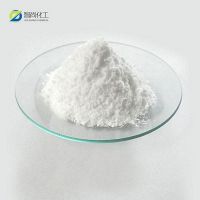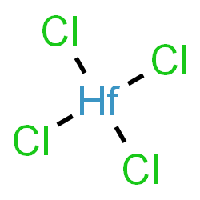Hafnium oxide deposition (CVD): Difference between revisions
| Line 30: | Line 30: | ||
Since HfCl<sub>4</sub> is a solid salt at room temperature, we dissolve it in water (H<sub>2</sub>O), in a ratio 1:2 and use direct liquid injection (DLI: https://www.intechopen.com/chapters/63679) for using it in our CVD as the precursor. | Since HfCl<sub>4</sub> is a solid salt at room temperature, we dissolve it in water (H<sub>2</sub>O), in a ratio 1:2 and use direct liquid injection (DLI: https://www.intechopen.com/chapters/63679) for using it in our CVD as the precursor. | ||
The waste result is hydrochloric acid which needs to be continuously flushed out with a gas like Argon | |||
Revision as of 19:25, 11 October 2022
The base of this chemical recipe and processing is Hafnium-Tetrachloride, as it can be seen in the picture.
You might notice that Hafnium-Tetrachloride is a solid crystal at room temperature, which is kind of a problem considering that we wanna use it as a vapor in our CVD furnace, in order to react it with oxide for obtaining a Hafnium-Oxide thin film layer.
The equipment required for this process are a CVD and a plasma cleaner for removing impurities after the Hafnium oxide deposition
Chemical properties of Hafnium-Tetrachloride
HfCl4 can be produced by several related procedures:
- The reaction of carbon tetrachloride and hafnium oxide at above 450 °C;
- HfO2 + 2 CCl4 → HfCl4 + 2 COCl2
- Chlorination of a mixture of HfO2 and carbon above 600 °C using chlorine gas or sulfur monochloride:
- HfO2 + 2 Cl2 + C → HfCl4 + CO2
- Chlorination of hafnium carbide above 250 °C.
The result of those chemical reactions is a crystalline powder with a melting point of 432 °C
Processing steps
The basic reaction we want to make use of, according to https://patents.google.com/patent/CN100356519C/en (original Chinese version: https://patents.google.com/patent/CN100356519C), is as following:
HfCl4 + 2 H2O → HfO2 + 4 HCl
Since HfCl4 is a solid salt at room temperature, we dissolve it in water (H2O), in a ratio 1:2 and use direct liquid injection (DLI: https://www.intechopen.com/chapters/63679) for using it in our CVD as the precursor.
The waste result is hydrochloric acid which needs to be continuously flushed out with a gas like Argon

